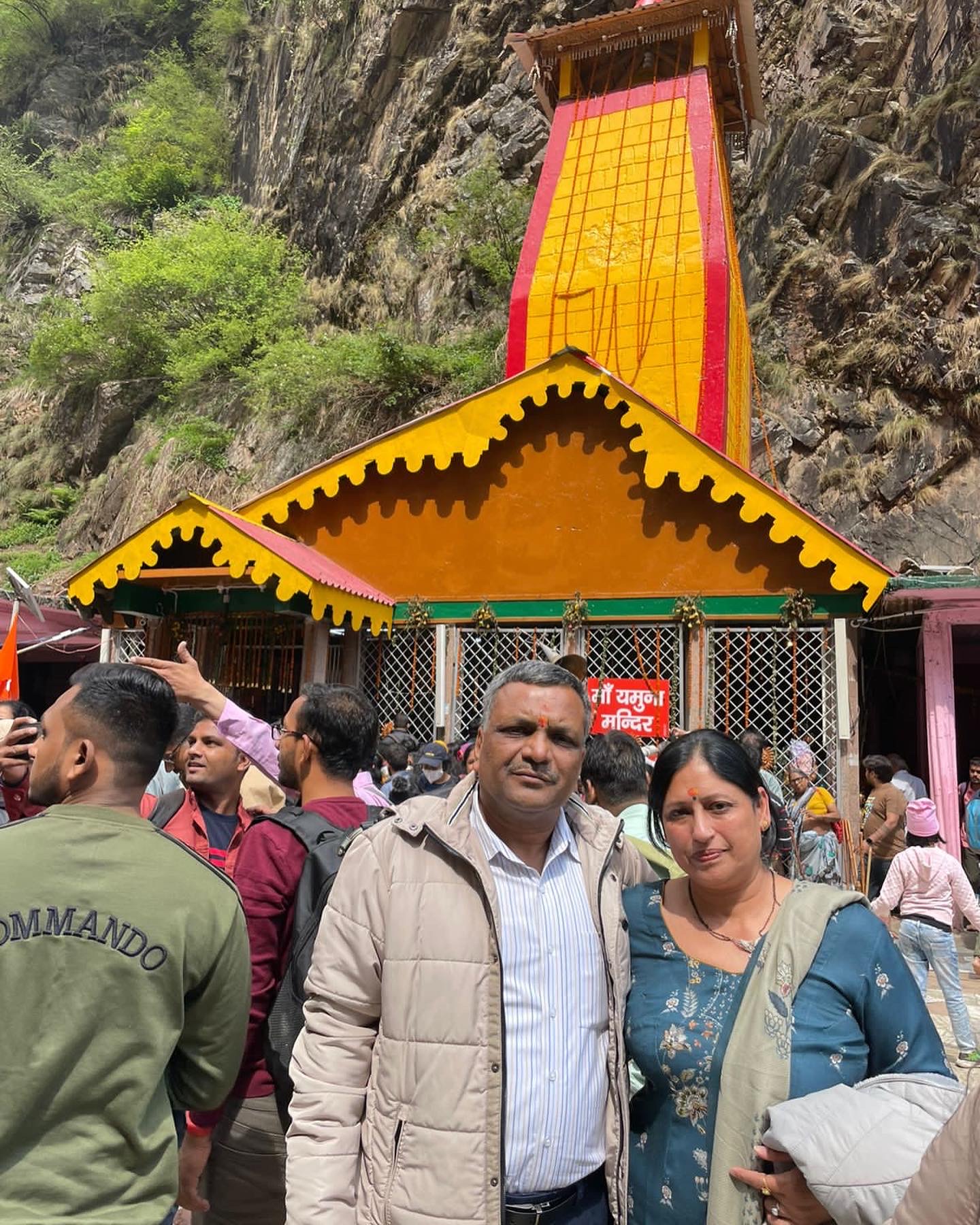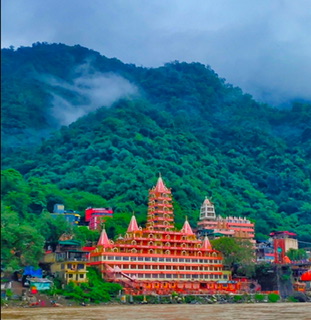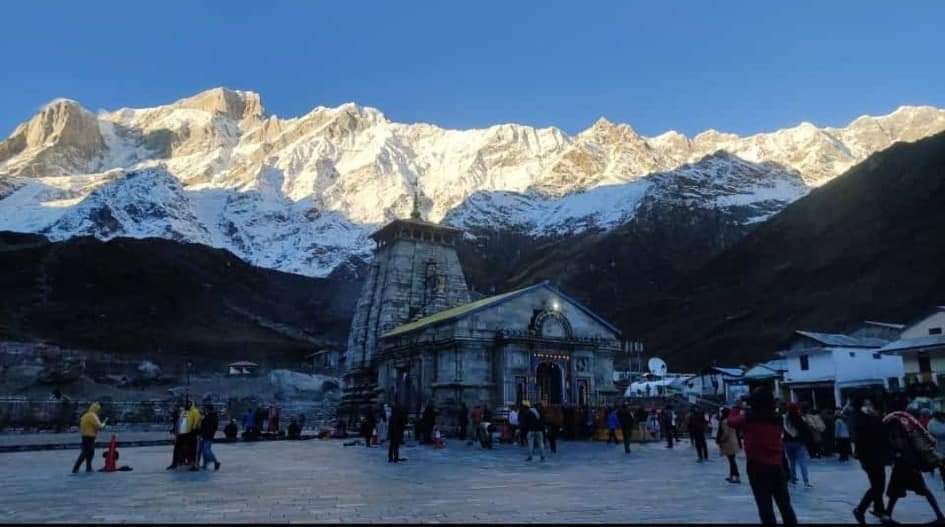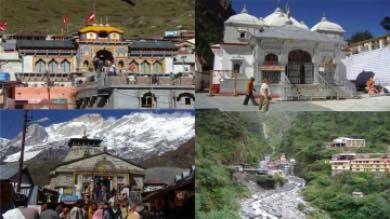10 Amazing Facts About Kedarnath Temple: You Never Know
The Kedarnath Temple is one of the most important pilgrimage sites in India. It is located near Rudrapur village in Uttarkashi district of Uttar Pradesh state and is dedicated to Lord Shiva. It is one of the four main Hindu shrines located in the Himalayas. The other three are Badrinath, Gangotri, and Yamunotri, which account for Chota Char Dham.
Kedar means 'Lord of the Field,' derived from the Sanskrit words, Kedara ('field') and Natha ('lord'). According to the Kashi Kedara Mahatmya, the place received its name because 'the crop of liberation' grows here.
Kedarnath is situated at 3,583 meters above sea level near Chorabari Glacier, which sources Mandakini River. Pilgrims have to walk for around 23 Kilometers to reach the Kedarnath temple.
There are many legends associated with the temple.
According to Purana, The Kedarnath Temple was built by the Pandava brothers. Pandavas were brought here following the Mahabharata on the advice of Sage Vyasa. The Pandavas desired to see Shiva apologize for killing their brothers (Kaurva). But Lord Shiva was not ready to accept the apology of the Pandavas, and Lord Shiva changed into an ox and fled the animals on the hill.
When the Pandavas pursued him, Lord Shiva hid by burying his head into the earth again. The other Pandavas took his tail, and a fight ensued. The bull's head fell in Rudranath's spot, while the body parts fell at four different places. The name knows these five spots of Panch Kedar. It compelled Lord Shiva to show up before Pandavas and grant them pardon.
This is how Lord Shiva changed his name to Jyotirlinga and became Kedarnath.
More Amazing Facts About Kedarnath Temple
1. When the Kedarnath temple is shut for six months in the winter, the deity's idol is carried into Omkareshwar temple in Ukhimath and worshipped in the Omkareshwar temple for six months.
2. Kedarnath Temple Commission manages Kedarnath Temple under the Shri Kedarnath Mandir Act of the Uttar Pradesh Government.
3. The Shiva Lingam at the Kedarnath temple is a triangular shape. This makes it distinctive in Shiva temples. It is located within the Temple's sanctum sacredorum (Garbha the Griha). The Kedarnath temple has other idols representing Parvati, Lord Krishna, five Pandavas, and their wives Draupadi, Nandi, and Veerabhadra as other goddesses and gods. Their vehicle Nandi is the vehicle of Lord Shiva
4. The Mantras are performed using the Kannada language of the Kedarnath temple
5. The unpredictable weather conditions can make it difficult for anyone to reach Kedarnath quickly. In 2013, Kedarnath suffered the brunt of massive flooding that led to massive destruction.
6. The Kedarnath temple's elevation is 85 feet. It has a length of 187 feet and a width of 80 feet. Kedarnath temple walls are 12 feet thick and constructed of extremely robust stones.
7. The idol believed to be that is of Shiva within Kedarnath has degraded. Also, it is believed that the head of the statue of Shiva is found in the Doleshwar Mahadev Temple in Bhaktapur, Nepal.
8. The Kedarnath temple is located on a 6-foot high stage. The temple was carved using a huge stone to this height. Experts suggest that interlocking technology could be used to connect the stones. It is a technology that enabled the keeping of the Kedarnath temple in the middle of the river.
9. Kedarnath temple was constructed by the king Parikshit in a great manner. The King was also the father of Emperor Jaymejayan, and King Parikshit was a victim of snakebite.
10. The Kedarnath temple is among the twelve holy Jyotirlingas for Lord Shiva. It is also believed that this temple that Lord Shiva blessed the Himalayas and made his devotees filled to Lord Shiva.
11. Some religious scholars claim that nothing will be able to happen at this holy temple regardless of how large an event occurs because the main god guards this temple. This was evident from the floods in 2013 when the surrounding areas of Kedarnath were destroyed, but there was minimal damage to the temple.
12. RK Dobhal says that this temple is robust. The walls are covered in the thickest rock, and its roof is constructed of one stone.
13 Kedarnath temple was covered by snow for over 400 years. After that, the temple was brought to life.
14. The main priest of the Kedarnath temple is always a member of the Veerashaiva society of Karnataka, also called Raval. He doesn't perform the puja ceremony independently, but his assistant performs it. But, when the god’s idol is moved between Kedarnath to Ukhimath. This is when the main priest will perform the ceremony. Raval is also the lord of Ukhimath.
15. The name Kedarnath originates from the name 'Kodaram.'Legend claims that the gods worshipped Lord Shiva to protect themselves from demons. Then Lord Shiva came in the form of an ox and defeated the demons and threw their bodies into the Mandakini river using his horns.
16. Bhairo Nath temple is believed to be a protector for Kedarnathji. It is essential to visit the Bhairav Nath Temple during the beginning and ending ceremonies for Kedarnath Temple. It is believed that if the temple is closed, Bhaironathji protects the Kedarnath shrine by keeping it safe from spirits.
Exploring the Height of Kedarnath Temple:
Unveil the majestic stature of Kedarnath Temple as we delve into its spiritual significance and remarkable altitude. Situated amidst the breathtaking Himalayas, Kedarnath Temple stands as a symbol of devotion and faith, captivating pilgrims and travelers alike with its towering presence.
Key Highlights of Kedarnath Temple's Height:
Elevation and Magnificence:
- Perched at an awe-inspiring altitude of 3,583 meters (11,755 feet) above sea level, Kedarnath Temple commands reverence and admiration from devotees and adventurers who brave the ascent to its sacred abode.
Spiritual Significance:
- The lofty height of Kedarnath Temple symbolizes spiritual transcendence and divine connection, attracting pilgrims from far and wide to seek blessings and solace in the lap of the Himalayas.
Historical Legacy:
- With a history dating back centuries, Kedarnath Temple's towering presence serves as a testament to the enduring devotion of generations past and present, preserving the sanctity and heritage of this sacred site.
Natural Splendor:
- Set against the backdrop of snow-capped peaks and verdant valleys, the height of Kedarnath Temple offers a surreal panorama of nature's grandeur, captivating visitors with its ethereal beauty and serenity.
Frequently Asked Question
What is Special About Kedarnath Temple?
It is the first site of the Panch Kedar pilgrimage sites and is one of the major sites in Chota Char Dham in India. It is one of the highest among the 12 jyotirlingas. As stated in Vayu Purana, Lord Vishnu took the form of Narayan and reached Badrinath, where Lord Shiva resides. At the request of Lord Shiva, Lord Shiva moved from Badrinath to Kedarnath.
Who Discovered Kedarnath Temple?
According to legends, Pandavas built the Kedarnath temple, and the present temple was established by Adi Shankaracharya, which is 1200 years old. Shankaracharya Ji glorified the shrine in the 8th century A.D.
When Was Kedarnath First Discovered?
The earliest reference in Kedarnath belongs to the 7th and 8th centuries. In Skanda Purana, Kedara is referred to as a place where Shiva releases Holy Ganga from his Jata (matted Hair)
YOU MIGHT ALSO LIKE:
You Might Also Like

Do Dham yatra by helicopter
2N3D Helicopter Tour Package
150,000/ pax for charter

Chardham Yatra Helicopter Services
5N6D Helicopter Package
235,000/ pax for charter

Dodham yatra by helicopter
Same Day Return
120,000/pax for charter

Kedarnath yatra helicopter services
Same Day
85,000/pax for charter








